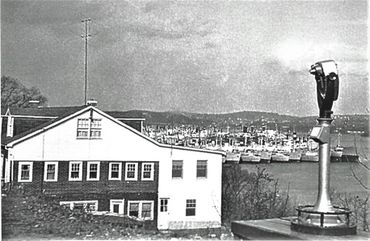MOTHBALL FLEET ON THE HUDSON
During World War ll, the United States Department of the Navy increased its fleet of ships to nearly 7,000. They were manufactured at an incredibly fast rate by a female workforce that replaced male workers who entered the military – collectively dubbed Rosie the Riveter.
But that large ship production left the Navy in a dilemma at the end of the war. What should be done with such a vast and, for the most part, unnecessary fleet?
In 1946, the National Naval Defense Reserve Fleet was established and eight sites around the nation were selected to store the ships, maintain them, and keep them ready for action in the event of a national emergency.
Among the eight locations was the Hudson River in Tarrytown, New York. While its official name was the Hudson River Defense Reserve Fleet, many local residents simply called it the Mothball Fleet. Not long after the New York anchorage was established, it was relocated north to Jones Point, Rockland County, where it remained active from 1946 through 1971.
At its peak in July 1965, 189 vessels that saw action around the globe during World War ll were anchored at Jones Point, side-by-side in neatly arranged rows that spanned the river for several miles south. To keep the fleet battle-ready, a crew of eighty-six did routine maintenance and equipment tests.
Through the years, as the nation became involved in various conflicts such as in Korea and Vietnam, several ships were brought back into service. As ships came and went, the Mothball Fleet in the Hudson attracted considerable attention.
In July 1971, the last two ships anchored in the Hudson River Mothball Fleet were sold for scrap and towed away bringing an end to a historic use of the river at Jones Point.

Photo Gallery






.jpg/:/rs=w:370,cg:true,m)


This website uses cookies.
We use cookies to analyze website traffic and optimize your website experience. By accepting our use of cookies, your data will be aggregated with all other user data.